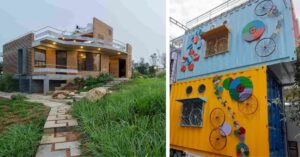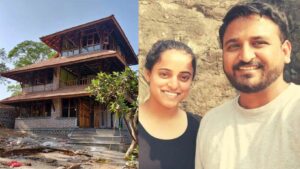MBA Grad & Engineer Duo Build 1100 Mud Block Homes That Are Cooler & Greener
Sathwik S and Pradeep Khanderi run Suraksha Mudblock, a venture that promotes construction of mud home using the interlocking mud brick method, which is not only environment friendly, but also cost efficient
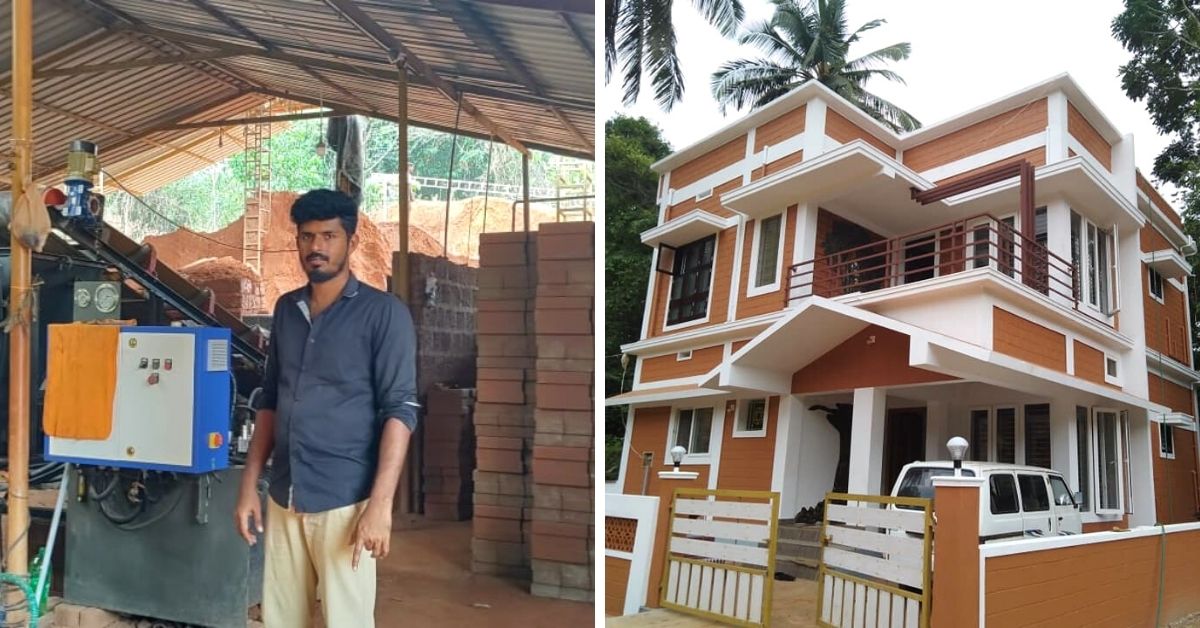
A downside to increasing urbanisation is that we often forget the traditional wisdom that has shaped sustainable living in India for centuries. This is evident in alarming statistics — from 57 per cent in 1971, the number of earthen houses rapidly declined to 28.2 per cent, as registered in 2011.
Today, there is a shifting preference for cement to construct homes. This is environmentally hazardous and one of the primary contributors to climate change.
However, two friends from Karnataka are trying to reverse the trend and make traditional mud houses popular again.
Saving water, reducing costs
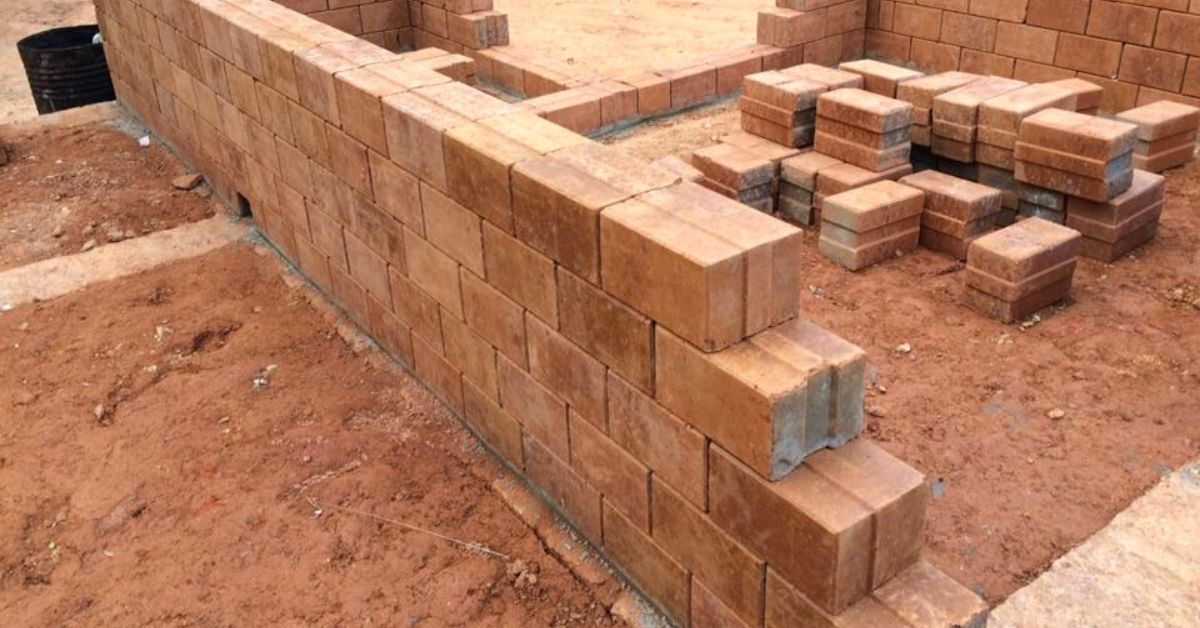
Sathwik S, a management professional, and his friend Pradeep Khanderi, an automobile engineer, started Suraksha Mudblock in 2016. The organisation constructs houses using interlocking mud block bricks and promotes environment-friendly construction practices.
Speaking with The Better India, Sathwik says, “After finishing my MBA, I started working with a poultry industry in Kozhikode, Kerala. During one of the tours in the Payyanur region, I came across a mud house made using interlocking bricks. I was impressed after learning that the construction method was eco-friendly and cost-effective.”
Intrigued by the construction method and its advantages, he wanted to explore the newly discovered technology. “I visited a factory located nearby to collect more information about the process. I learned that it was not a new technology, but one of the oldest and most sustainable forms of construction,” he says, adding that the technique was practised in countries like Africa as well.
Sathwik says, “Global temperatures are rising, and the use of cement is damaging the planet. Many people aim to have independent houses and search for environmentally friendly materials and construction methods. In 2015-2016, not many people in the region were aware of such sustainable construction practices. But they were exploring eco-friendly alternatives that will ensure their house remains cool during summers and keeps them warm during winters.”
He then decided to rope in his long term friend Pradeep to establish a business. They set up a factory to produce quality mud blocks for construction.
Sharing the features of interlocking mud block construction, Sathwik says, “The mud is cleaned and sieved to attain the desired quality of fineness. A required amount of soil then is introduced to the batch mixer, where the cement is blended, along with a minimal quantity of plasticiser, a synthetic resin, that enables flexibility to the mixture. The mud is then stabilised and poured into the mould and compressed.”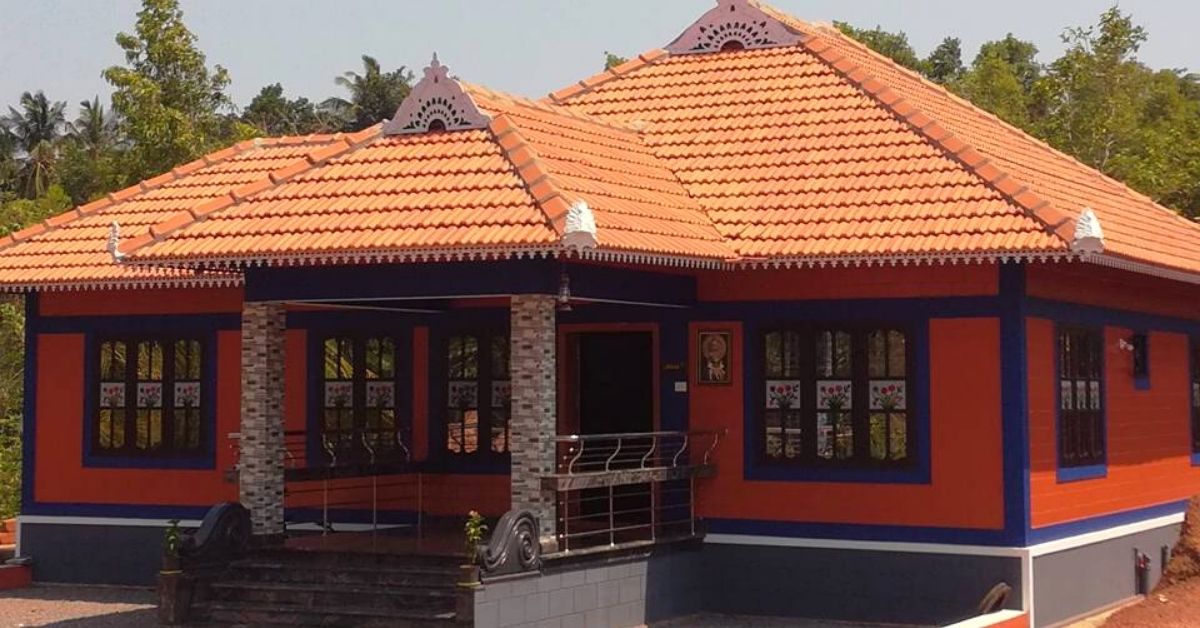
The bricks are made from mud and have a unique design. They have a peculiar shape and structure with projections and recessed contours, which enable them to interlock, thereby adding strength to the wall. Moreover, they are heavier and have 2.5 times more volume as compared to conventional baked bricks. The method involves 8 per cent cement for bonding, which saves lakhs of litres of water and a significant amount of sand and mortar. It does not require baking during the process.
The size of the bricks may vary depending on the construction requirements.
They also have more strength than traditional ones and do not absorb heat from the sun. “They ensure the house is cooler by at least 10 degrees. The material is breathable, which allows air ventilation between the outside and ambient environment, serving as an insulator for the winter months. And structures made using these bricks are naturally aesthetically pleasing and do not necessarily require plastering and painting, thus saving on the costs,” Sathwik says.
The entrepreneur says employing the process can save up to 20 per cent on construction expenses. “For example, if a conventional construction method costs Rs 10 lakh, we can achieve the same within a budget of Rs 7 lakh,” he says.
Besides being cost-effective, the bricks are reliable, durable, allow customisations, and are low on maintenance. “They also enable quicker construction of houses as the time required to set the concrete and strengthen the structure reduces in conventional buildings,” he says.
Sathwik says using mud blocks is similar to borrowing soil from nature and returning it. “The mud block bricks can be scrapped down and repurposed. It prevents the creation of construction debris, a major pollutant and concern for local governments,” he says.
Since its inception, the company has constructed over 1,100 houses using these bricks, he says.
Taking a step towards sustainability
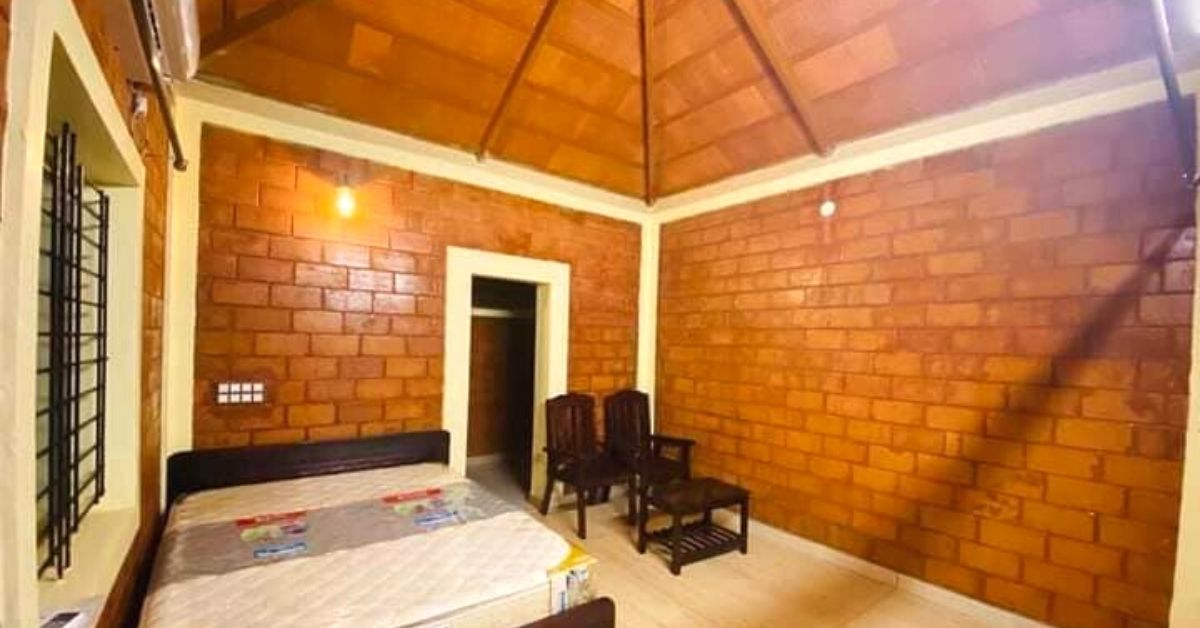
Maharashtra-based architect Praveen Mail says the interlocking mud block bricks technique is sustainable and can be used for a wide range of soil types. “It can be executed using locally available soil used during land excavation. It saves transport and purchase costs to procure sand,” he says.
Praveen cautions that the technique comes with limitations. “You cannot construct a high rise building with this method. Our experiments showed withering and damage in extreme rains and heat. It is advisable to have extended rooftops to address the issue and consider modifications according to the geographical and climate conditions,” he says.
He adds, “The other limitation is that these bricks can only be repurposed for construction purposes as they have cement mixed in them. Further research and development is required to make these bricks entirely environmentally friendly. It would be ideal to have an alternate material to stabilise the bricks. But for now, this method has proven to be sustainable compared to using baked bricks, which make soil infertile.”
Praveen says that for now, more people should reduce the use of cement and opt for environmentally friendly alternatives.
“The planet has limited natural resources, and global temperatures are increasing each year. As humans, it is our collective responsibility to take steps towards a sustainable future and save the planet,” he says.
Source:
Edited by Divya Sethu
This story made me
- 97
- 121
- 89
- 167
Tell Us More
We bring stories straight from the heart of India, to inspire millions and create a wave of impact. Our positive movement is growing bigger everyday, and we would love for you to join it.
Please contribute whatever you can, every little penny helps our team in bringing you more stories that support dreams and spread hope.






